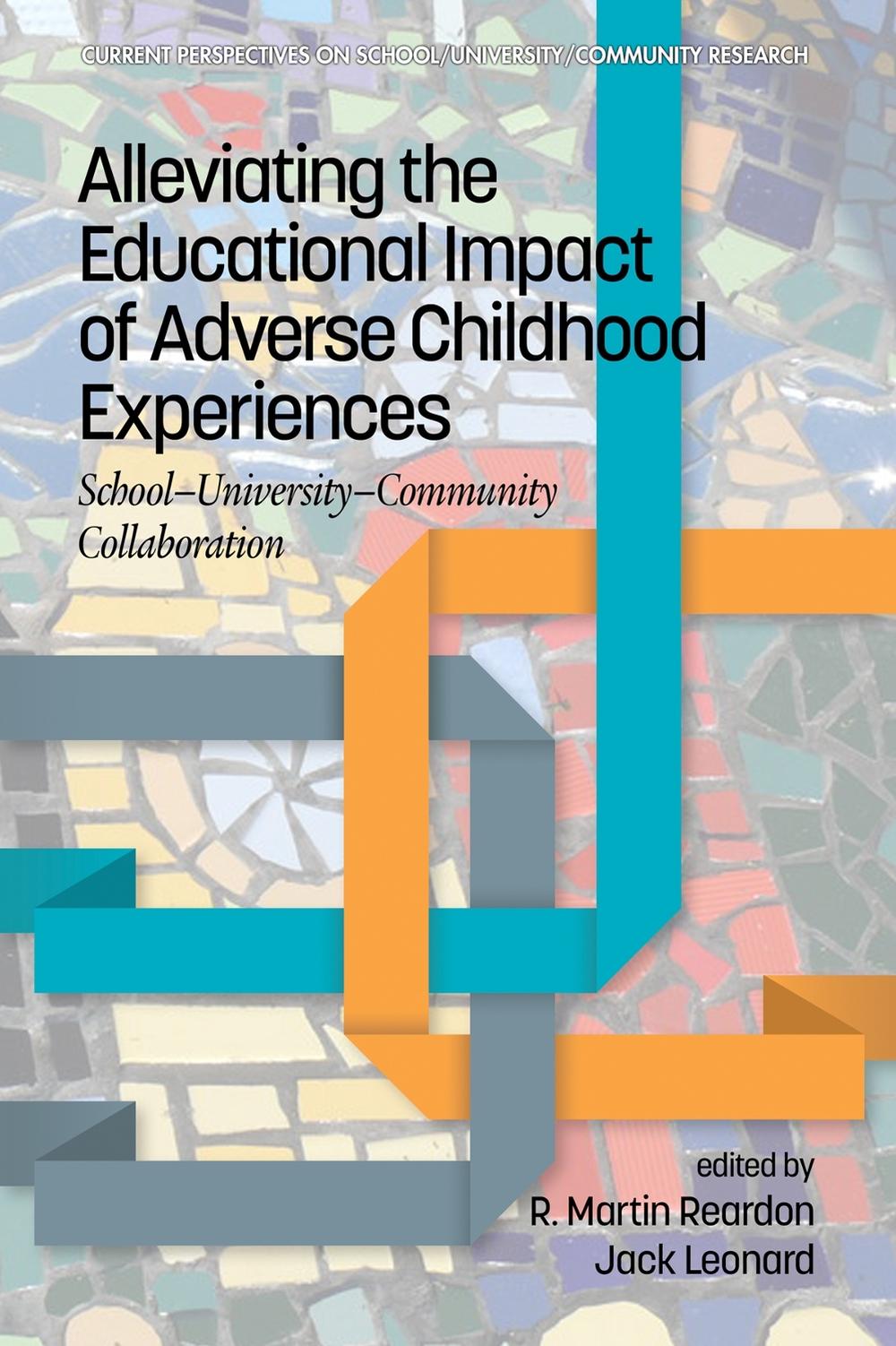
When you click on links to various merchants on this site and make a purchase, this can result in this site earning a commission. Affiliate programs and affiliations include, but are not limited to, the eBay Partner Network.
Alleviating the Educational Impact of Adverse Childhood Experiences: School-Univ

- Item No : 146518036741
- Condition : Brand New
- Brand : No brand Info
- Seller : the_nile
- Current Bid : US $100.12
-
* Item Description
-
The Nile on eBay

Alleviating the Educational Impact of Adverse Childhood Experiences
by R. Martin Reardon, Jack Leonard
Crises like family separations and natural disasters highlight children's trauma, but many face daily adversity. The National Survey of Children's Exposure to Violence shows widespread victimization, with ACEs harming health and behavior. This book presents research on alleviating the educational impact of these phenomena.
FORMAT
PaperbackLANGUAGE
EnglishCONDITION
Brand New
Publisher Description
Recent crises—whether policy-induced (e.g., family separation at the Mexico/U.S. border) or natural disaster-related (e.g., hurricanes in Florida and North Carolina and wildfires in California)—have galvanized the attention of the U.S. and international public on the plight of children who endure these traumatic events. The sheer enormity of such wrenching events tend to overshadow the trauma endured by many children whose everyday life circumstances fall short of affording them a safe, stable, and nurturing environment.At the national level, three rounds of data collection spanning January 2008 through April 2014 constituted the National Survey of Children's Exposure to Violence (NatSCEV) that—according to Finkelhor, Turner, Shattuck, and Hambly (2013) in reporting on the 2011 round—assessed "a wide range of childhood victimizations" (pp. 614-615). Among many other findings, Finkelor et al. concluded that "overall, 57.7% of the children and youth had experienced or witnessed at least 1 to 5 aggregate exposures (assaults and bullying, sexual victimization, maltreatment by a caregiver, property victimization, or witnessing victimization) in the year before this survey" (p. 619). According to the recent re-visiting of NatSCEV II by Turner et al. (2017), "almost 1 in 4 children and adolescents ages 5-15 in the United States lived in family environments with only modest levels of safety, stability, and nurturance, while about 1 in 15 had consistently low levels across multiple domains" (p. 8).Adverse childhood events (ACEs) have both immediate and long-term impacts on children's health and well-being (Banyard, Hambly, & Grych, 2017; Bowen, Jarrett, Stahl, Forrester, & Valmaggia, 2018; Walker & Walsh, 2015). Children do not shed their entanglement with ACEs at the schoolroom door. To highlight just one study, Jimenez, Wade, Lin, Morrow, & Reichman (2016) conducted a secondary analysis of a national urban birth cohort and found that experiencing ACEs in early childhood was "associated with below-average, teacher-reported academic and literacy skills and [more] behavior problems in kindergarten" (p. 1).
Author Biography
R. Martin Reardon, East Carolina University.
Jack Leonard,University of Massachusetts-Boston.Table of Contents
- Introduction.
- North Carolina Resilience and Learning Project, Katie Rosanbalm, Elizabeth DeKonty, and Sheronda Fleming.
- Trauma-Informed Partnering, Jack Leonard.
- Our SchoolBehavioral Health "Y'Alliance": The Development of a Rural School–Community–University Collaboration Focused on Supporting Children Who Have Experienced Trauma, Travis Lewis, Karen D. Jones, Karen Koch, Kia Glosson, and Karen Harrington.
- Pedagogy and Adverse Childhood Experiences: A Teacher's Action-Learning Journey in Mitigating the Impact of Trauma Through Changing Teaching Practice, Michelle Montgomery, Roberto H. Parada, and Brenda Dobia.
- Systemic School Reform Partnership to Address Adverse Childhood Experiences in Flint, Michigan, Bryan Beverly, Nicole Ellefson, and Brian J. Boggs.
- River of Emotions: Reflecting on a University–School–Community Partnership to Support Children's Emotional Processing in a Post-Disaster Context, Carol Mutch, Jason Miles, and Sarah Yates.
- Increasing Trauma-Informed Practices in a HighPoverty Elementary School: A School, University, and Community Partnership, Betty V. DeBoer and Alyssa M. Boardman.
- Schoolwide Trauma Informed Professional Development: We Can! Building Relationships and Resilience, Armeda Stevenson Wojciak, Jan Powers, and Laura Medberry.
- An Integrated Approach to Mitigating Adverse Childhood Experiences Through Trauma-Informed Yoga, Lauren Dotson Davis and Rebecca Buchanan.
- Bridging Education and Neuroscience to Support Transformation in Teaching and Learning: A Design-Based Approach,Alison Wishard Guerra, Shana R. Cohen, Amanda Datnow, Timothy Brown, Terry Jernigan, Matt Doyle, and Alan Daly.
- Coalescing Streams: Interrupting the Progression of Adversity Through Cross-Sector Mobilization and Systems Alignment, John T. King, Aprille Phillips, Todd Bloomquist, and Peter Buckley.
- A Research-Practice Partnership Serving Students Experiencing Trauma: BestPractices Revealed by an Investigation of a Dropout Prevention Alternative School, Nicole Ralston, Rebecca Smith, Cara Megan Wright, and Jacqueline Waggoner.
- Creating Holistic Trauma-InformedSchools: School-Based Health Centers, Sherry Shamblin, Dawn Graham, and Erin Lucas.
- About the Contributors.
Long Description
Adverse childhood experiences (ACEs) may include major disruptive events (e.g. earthquakes, hurricanes, or floods), but more pervasive is the impact of the daily stress of coping with one of more of the facets of family challenges (e.g. economic hardship and its attendant issues) or even dysfunction (e.g. parent or guardian divorce or separation, or living with neglectful or abusive parents). The use of the term pervasive is warranted. For example, as highlighted in the Introduction, a 2019 study of the findings emerging from the 2016 National Survey of Children's Health found that, among the more than 45,000 children on whom parents reported data, more than one-fifth experienced economic hardship and parent/guardian divorce. The consequences for educators of children exposed to ACEs are far-reaching and have galvanized the attention of a broad swath of educational researchers and practitioners. As discussed in a 2019 insightful five-part series in Education Week html), the consequences include the imperative for teachers and educational leaders to adopt an informed approach to alleviating the educational impact of ACEs on their students while making provision for their own well-being. In this volume, various authors explore the educational context of ACEs and describe and reflect on their research-inspired endeavors to integrate the resources of schools, universities, and communities to sustain a safe and supportive educational environment for and build the resilience of all students.
Details
ISBN1648021123Year 2020ISBN-10 1648021123ISBN-13 9781648021121Author Jack LeonardShort Title Alleviating the Educational Impact of Adverse Childhood ExperiencesLanguage EnglishSubtitle School-University-Community CollaborationDEWEY 371.92Format PaperbackImprint Information Age PublishingPlace of Publication GreenwichCountry of Publication United StatesAU Release Date 2020-05-27NZ Release Date 2020-05-27UK Release Date 2020-05-27Series Current Perspectives on School/University/Community ResearchEdited by Jack LeonardAudience Professional & VocationalPages 366Publication Date 2020-05-27Alternative 9781648021138US Release Date 2020-05-27Publisher Emerald Publishing Inc


-
- The Lost Super Foods
- $ 37.00
- The Self-Sufficient Backyard
- $ 37.00
- A Navy Seals BUG IN GUIDE
- $ 39.00
- Childrens Books Phonics Lot 60
- $ 34.99
















